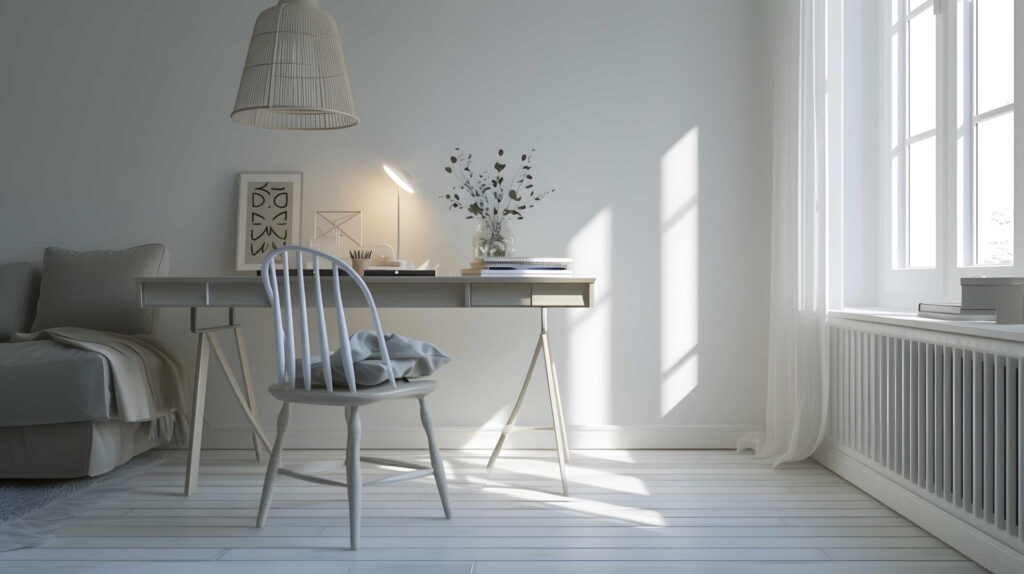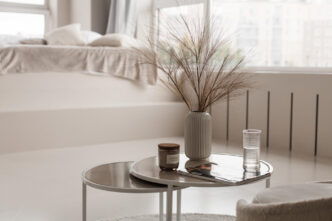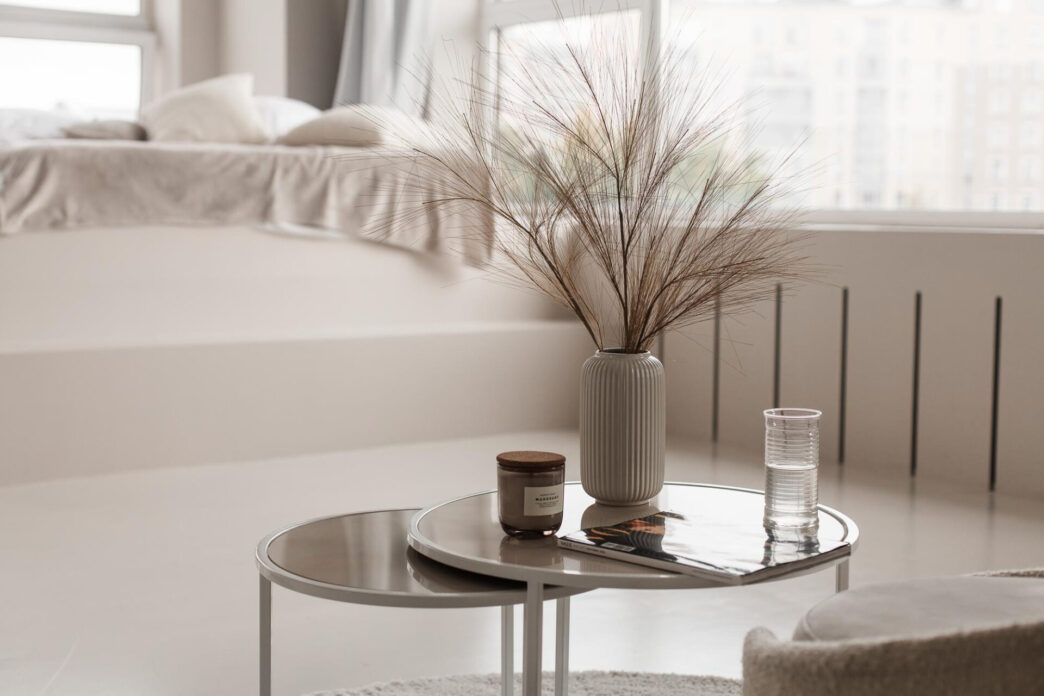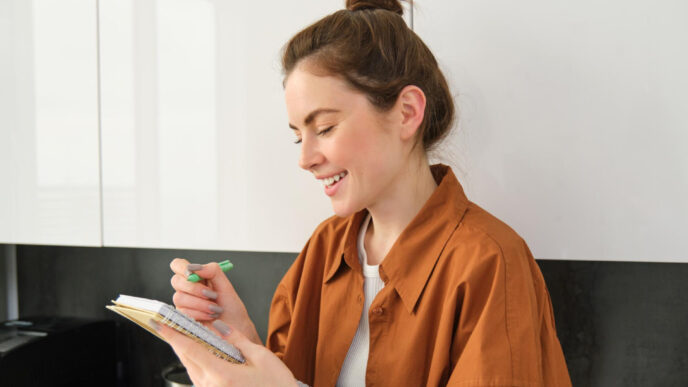Declutter Your Life, Reclaim Your Mind
Why Less Stuff Means Less Stress
In a world of constant input—emails, packages, reminders, and digital noise—clutter has become the default. It builds up in corners of your home, on your desk, and inside your mind. But clutter isn’t just inconvenient—it’s a silent stressor that impacts your mental health, productivity, and decision-making.
When your surroundings are chaotic, your brain is forced to process more stimuli, which leads to cognitive overload. You’re not just fighting mess—you’re fighting for focus. According to the National Association of Professional Organizers, the average person spends one year of their life looking for lost items. That’s a full year of wasted energy and stress that could be avoided with a better system.
“Clutter isn’t just the stuff on your floor. It’s anything that gets between you and the life you want to be living.”
Peter Walsh
The Problem Isn’t Your Space—It’s the System
Many people blame their lack of space, time, or motivation for their clutter. In reality, the issue is rarely physical—it’s structural. Most organization methods fail because they don’t address the habits that cause clutter in the first place.
This is where the zero clutter zero stress method stands apart. It’s not about perfection or minimalism. It’s about designing a system that prevents messes from forming. It helps you make quick decisions, store items intentionally, and most importantly—maintain it all without effort.
The goal is simple:
✔️ Stop clutter before it starts
✔️ Build habits that stick
✔️ Create a space that supports your peace of mind
Whether you’re a working professional drowning in paperwork or a parent overwhelmed by toys and laundry, this method helps you declutter your life from the inside out.
“Don’t put it down—put it away.”
Understanding the Root of Clutter
The Psychology Behind Piles of Stuff
Clutter isn’t just about a lack of organization—it’s a reflection of deeper psychological patterns. Many people associate possessions with security, memories, or even identity, making it harder to let go.
Research from UCLA’s Center on Everyday Lives of Families found that cluttered homes lead to increased stress, particularly for women, who often feel the burden of maintaining order. The mere sight of unfinished tasks, scattered papers, or overflowing shelves signals the brain that there’s work left to do, creating a constant undercurrent of anxiety.
Decision Fatigue and Procrastination
Each item in a pile represents a delayed decision—whether it’s mail, clothes, or digital files. The more choices we postpone, the more overwhelming they become. This phenomenon, known as decision fatigue, makes it harder to tackle clutter over time.
✔️ Example: A stack of unopened mail isn’t just paper—it’s a list of micro-decisions: Should I read this? Keep it? Shred it? Act on it? As these decisions accumulate, they become mentally exhausting, leading to avoidance and even bigger piles.
By reducing daily decision overload, the Zero Piles Method makes organization effortless.
The Emotional Weight of Disorganization
Clutter often carries emotional baggage—guilt, nostalgia, or fear of needing something “one day.” This is why people struggle to part with things they don’t use.
Common emotional clutter traps:
| Type of Clutter | Emotional Reason |
|---|---|
| Unused gifts | Guilt over discarding them |
| Old clothes | Nostalgia or “what if I lose weight?” |
| Stacks of papers | Fear of missing important information |
| Unfinished projects | Reminder of lost time or money |
Recognizing these emotional ties is the first step to breaking free. The key isn’t just organizing things, but shifting your mindset—from attachment to intentionality.

The Core Principles of the Zero Piles Method
The Zero Piles, Zero Stress Method isn’t about one-time cleaning—it’s about changing habits to prevent clutter from forming in the first place. These core principles make it effortless to maintain an organized space.
The One-Touch Rule
One of the biggest reasons clutter builds up is postponed decisions. The One-Touch Rule eliminates this by forcing immediate action:
✅ Touch an item once—decide its fate immediately.
❌ No “I’ll put it away later.”
✔️ Example: Instead of setting mail on the counter, open it immediately. Toss junk mail, file important papers, and act on urgent ones.
“If it takes less than a minute, do it now.”
Everything Has a Home
Disorganization thrives when items don’t have a designated place. If you don’t know where something belongs, you’ll set it down “just for now,” and soon, a pile forms.
✔️ Rule: Every item in your home or office should have a clear, logical home.
Practical tips:
- Store frequently used items in easy-to-reach places.
- Label storage bins for rarely used items.
- If an item doesn’t fit anywhere, ask: Do I really need this?
Daily Micro-Decluttering
Most people try to declutter in big, exhausting sessions—which is why they fail. The Zero Piles Method relies on small, daily actions that take minutes but prevent clutter from accumulating.
✔️ The Five-Minute Rule: Set a timer and tackle one area per day (a drawer, a shelf, a stack of papers).
✔️ Declutter as you go: If you notice something out of place, fix it immediately.
“Clutter doesn’t happen overnight—neither does organization.”
Intentional Consumption
The easiest way to reduce clutter? Stop bringing it in. Many people declutter only to refill their space with more unnecessary things.
✔️ Ask before buying: Do I really need this? Where will I store it?
✔️ Quality over quantity: Invest in fewer, better items instead of accumulating cheap, disposable ones.
✔️ Digital clutter counts too: Unsubscribe from emails, delete unused apps, and organize files regularly.
By following these principles, piles never have a chance to form—which means less stress and more mental clarity.

Step-by-Step Guide to Implementing Zero Piles
Transforming your space into a clutter-free zone doesn’t require extreme minimalism or overwhelming cleaning marathons. The Zero Piles Method is about small, consistent actions that create lasting results. Follow these steps to break the cycle of clutter and maintain a stress-free environment.
Step 1: Start with One Zone
Trying to declutter your entire space at once can be paralyzing. Instead, focus on one small, manageable area to gain momentum.
✔️ Pick a zone that bothers you the most. This could be your desk, kitchen counter, or a cluttered drawer.
✔️ Set a timer for 10–15 minutes. The goal isn’t perfection—it’s progress.
✔️ Use the “Keep, Donate, Trash” method. If you don’t use it, love it, or need it, let it go.
“The best way to get started is to start small.”
Step 2: Identify the Biggest Problem Area
Some clutter is worse than others. Identify what type of clutter accumulates most often in your space:
| Clutter Type | Common Causes | Quick Fix |
|---|---|---|
| Piles of paper | Avoiding decisions, no filing system | Sort daily, create a “To-Do, File, Shred” system |
| Clothes on chairs or floors | No clear place to put worn-but-not-dirty clothes | Use a designated basket or hook |
| Random household items everywhere | No assigned home | Designate a specific spot for everything |
| Digital clutter (emails, files) | Overwhelm, lack of organization | Set up folders and delete unnecessary files weekly |
Focusing on your biggest clutter trigger first makes it easier to maintain other areas.
Step 3: Declutter in Quick Wins
Instead of exhausting yourself, break the process into simple, repeatable actions.
✔️ Set a “One In, One Out” Rule – If you bring in something new, remove something old.
✔️ Use a Declutter Box – Keep a box for items to donate. Once full, drop it off immediately.
✔️ Create a “Clutter-Free Zone” – Choose one spot (like a kitchen counter) and commit to keeping it clear at all times. This will naturally expand to other areas.
“Clutter is nothing more than postponed decisions.”
Step 4: Build Sustainable Habits
Decluttering is useless if you don’t change the habits that created the mess. To maintain a zero-pile space:
✔️ Use the “One-Touch Rule” – No setting things down “for later.”
✔️ Adopt the Five-Minute Reset – Before bed, spend five minutes putting things back in place.
✔️ Teach the system to others – If you share your space, get family or coworkers on board.
By following these steps, you’ll prevent clutter before it starts—no more overwhelming cleaning days, no more stress.
References and Inspirational Resources
- Life at Home in the Twenty-First Century: 32 Families Open Their Doors. Jeanne E. Arnold et al. UCLA Press.
- The Unbearable Heaviness of Clutter, Psychology Today – Article exploring emotional and psychological effects of clutter.
- The Cost of Clutter: Why It’s So Stressful, The New York Times – Research-based overview on how clutter impacts the brain.
- Interactions of Top-Down and Bottom-Up Mechanisms in Human Visual Cortex, Princeton Neuroscience Institute – Study on how clutter affects focus and cognition.
- Clutter and Well-Being: Examining the Impact of Clutter on Psychological Home and Subjective Well-Being, Journal of Environmental Psychology.
- National Association of Professional Organizers – Data and reports on time wasted due to disorganization.
- Peter Walsh – Organizational expert, known for promoting practical decluttering techniques and the quote used in the article.















